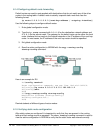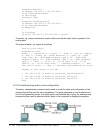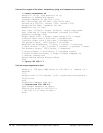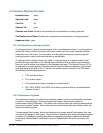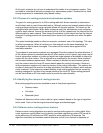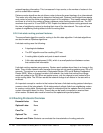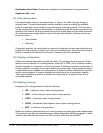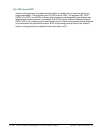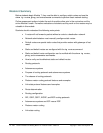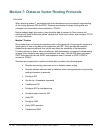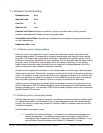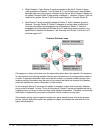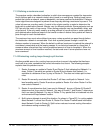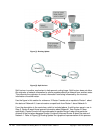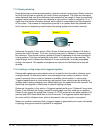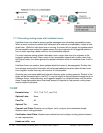
74 - 238 CCNA 2: Routers and Routing Basics v3.1 Instructor Guide – Module 6 Copyright © 2004, Cisco Systems, Inc.
Module 6 Summary
Before students begin Module 7, they must be able to configure static routes and use the
show ip route, ping, and traceroute commands to perform basic network testing.
Online assessment options include the end-of-module online quiz in the curriculum and the
online Module 6 exam. Formative evaluations of students as they work on the routers may be
valuable in this module.
Students should understand the following main points:
• A router will not forward a packet without a route to a destination network.
• Network administrators must manually configure static routes.
• Default routes are special static routes that provide routers with gateways of last
resort.
• Static and default routes are configured with the ip route command.
• Static and default route configuration can be verified with the show ip route,
ping, and traceroute commands.
• How to verify and troubleshoot static and default routes
• Routing protocols
• Autonomous systems
• Purpose of routing protocols and autonomous systems
• The classes of routing protocols
• Distance vector routing protocol features and examples
• Link-state protocol features and examples
• Route determination
• Routing configuration
• RIP, IGRP, OSPF, EIGRP, and BGP routing protocols
• Autonomous systems and IGP versus EGP
• Distance vector routing
• Link-state routing



